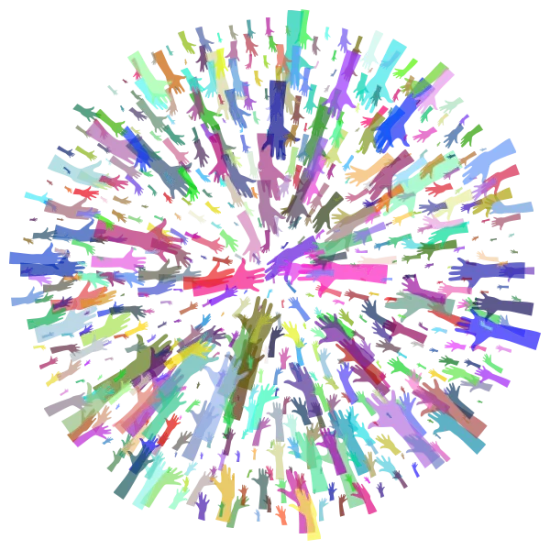- Margaret D.
- Friday, March 04, 2022
On April 1, 2022 the National Archives will release the 1950 U.S. Census. What will you discover?
I can't wait for the public release of the 1950 U.S. Census on April 1, 2022. After being private for 72 years, the public will finally get a chance to view this massive trove of information.
Fun Facts
- The U.S. population in 1950 was 151,325,798, a baby-booming 14.5% increase over 1940.
- The 1950 U.S. Census was the most accurate enumeration to date, with a specially-trained workforce of census takers and improved methods for following up on incomplete information.
- The 1950 U.S. Census was the first to enumerate Americans living abroad while serving in the Armed Forces or employed by the government.
- The 1950 Census was the first to enumerate transient populations.
- The 1950 U.S. Census was the last to be hand-recorded on ledgers. Future censuses were completed electronically.
This year, the census will be read and transcribed by computer at release, making it searchable right away! But since this is a new technology we expect there will be many errors at first. It will take about 5 months for volunteers to read and correct the 1950 census so that it can be searched more accurately by name. But many genealogists can’t wait that long! You can begin browsing the 1950 U.S. Census as soon as it is released by location. So, if you know where you or your ancestors lived in 1950, you can get a jump-start!
Do Your Homework
First, compile a list of addresses for your ancestors. The more information you have the better, like street number, name, city, county and state. If your ancestors lived in a rural district, what section of the county did they live in? Look for this location information in city directories, earlier Census listings (look at the top of the ledger for the ward, post office area, township, or other identifying locations), on death certificates, on World War II draft registration cards, on Social Security applications, even on old letters.
Once you have a State, County, City and Street or Rural area identified for your ancestor, you are ready to find their Enumeration District (ED). The ED is the KEY to finding your ancestors in the 1950 U.S. Census, and a lovely website One-Step Webpages by Stephen P. Morse (stevemorse.org) has been created to help researchers use the location information they know about where their ancestors lived to find the Enumeration District. This web tool is even recommended by the U.S. Census Bureau, so we are happy to point all of our eager researchers there too.
- On the Stephen P. Morse home page, click US Census and choose the Unified Census ED Finder (stevemorse.org)
- Select the State and County from the drop-downs. If your ancestor lived in a city, choose it and you will then be able to enter a street name to narrow your search. If they lived in a rural area, choose “other” and type in a keyword to identify the rural area. A ward, post office, institution, unincorporated place name, or other keyword can be used to help you narrow down the rural area into a specific ED.
- Use the 1950 Enumeration District maps for hints as well. Viewing 1940/1950 Enumeration District Maps in One Step (stevemorse.org)
Once you enter the information above, you will see a list of Enumeration Districts that pertain to that location. View the descriptions of these districts to further narrow down your selection. Once you think you’ve found the ED, click the link provided to begin browsing or jot it down to view later.
An ED will contain numerous pages of census data that you can browse page by page to locate your ancestor. You will not want to spend that time searching through the wrong ED, so do your best to locate the correct one using the tool before you begin. You’ll be rewarded once you find your ancestor’s household in 1950.
What will you find on the 1950 U.S. Census?
The U.S. Census is really the backbone of American genealogy. This is were we can find our ancestors in their homes, with their families, or alone, or however they may have been living at the time. For each individual the 1950 U.S. Census form records:
- The location where they are residing
- Their status as the head of the household or relationship to the head of the household
- Their race (White, Negro, American Indian, Japanese, Chinese, Filipino, or Other spelled out)
- Their sex (Male or Female)
- Their age at last birthday (as of April 1, 1950)
- Marital status (Married, Widowed, Divorced, Separated, or Never married)
- State or Foreign Country of birth
- Occupation
Plus, for people chosen for additional questions, you will find:
- Details on their place of residence the previous year
- Location where their parents were born
- Education level
- Income
- Military service
- Type of work they do
- Marital history
Also, browse the entire page to glean information about the neighborhood where your ancestors lived. The U.S. Census provides an intriguing snapshot of American society and culture every 10 years. So, dive in and see what you can discover.
Where can I find the U.S. Census?
On or soon after April 1, 2022, the 1950 U.S. Census will be accessible online at FamilySearch.org and Ancestry.com. Richland Library card holders will be able to access it through Ancestry Library Edition (in-library only) and from home with HeritageQuest. Good luck with your search!


